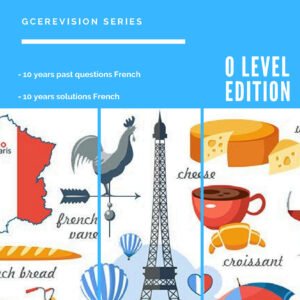Advanced level 2025 Littoral Regional Mock physics 2
Advanced level 2025 Littoral Regional Mock physics 2
SECTION I ( I ‘A fioim)
Answer ALL Questions in this Section.
1) a) Explain why a unit is essential in expressing the value of a physical quantity but cannot uniquely
identify ilie.quantity. . – .
h) When an electron accelerated by a high potential dif fcrcncc, V, enters perpcruliculaily to a uniform
magnetic field of flux density 13, it is deflected through a circular path ol radius, r. fhc specific
charge of an electron is given by;
2V
Q ~
BV
| Show that the equation is homogeneous 2) a) Explain how rubber differs from steel in terms of its mechanical properties. |
(6 marks) |
b) figure I shows a steel wire of length 100 cm fixed horizontally between two supports A and B,
100 cm apart. When a mass of 8.0 kg is hung from the mid–point of the wire, the middle of the
wire sags a distance of 2.0 cm.
Figure I
i) Calculate the total extension of the wire.
ii) If the diameter of the wire is 2.8 mm, determine the Young’s modulus of the material of the
| wire. • 3) a) What is meant by an emission spectrum? |
(6 marks) |
I>) Figure 2 shows part of the emission spectrum from a hydrogen gas in a laboratory. Ihe vertical
lines indicate the wavelengths in nm.
8.0 kg
Figure 2
i) Show clearly the region of the electromagnetic spectrum where these lines arc found.
ii) Explain how this emission spectrum provides evidence for the existence of discrete energy
levels for the electron in the hydrogen atom.
| Hi) Determine the highest energy of the emission photon. 4) a) Define temperature coefficient of resistance of a material. |
(6 marks) |
b ) A copper wire has a resistance of 5.0 £2 at ice point and a temperature coefficient of resistance of
3.9 x JO‘1K‘1. It is connected in series with an aluminium wire of resistance of 10.0 Q at ice point
and a temperature coefficient of resistance of 4.3 x 10’1K‘1.
i) The wiresinseries areconnected toa 24.0 V powersupply.Determine thepowerdissipatedin
the circuit when the temperature of both wires is increased to 30 °C.
ii) Sketch on the same axis, graphs, showing the variation of the resistance of copper and the
| resistance of aluminium with temperature between 0 nC and 30 nC. | ^ marks) |







